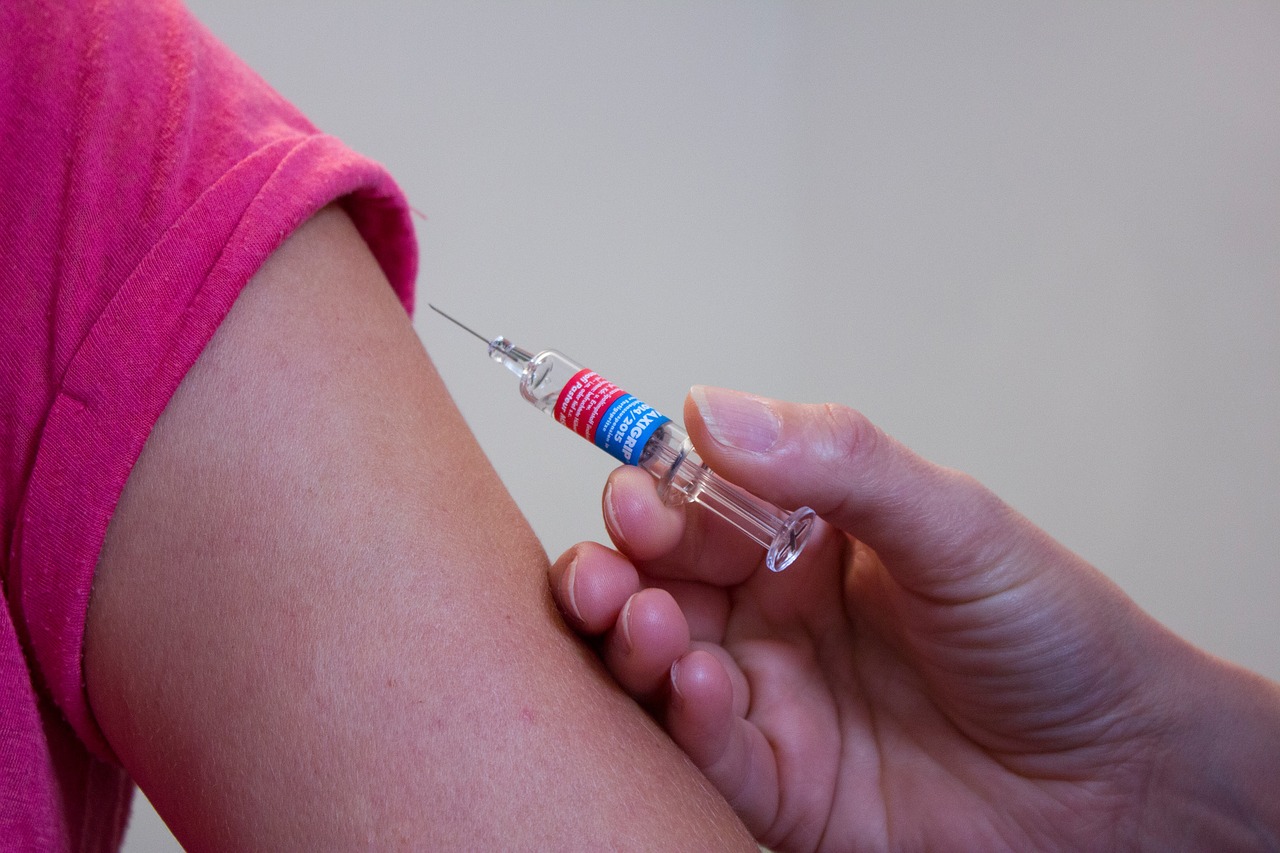
Each year, as flu season approaches, many of us offer up our arms for a quick pinch, hoping to stay healthy during the winter ahead. The annual influenza vaccine protects against a few strains of the disease that experts at the World Health Organization (WHO) and Food and Drug Administration (FDA) predict will be most common that season.
The U.S. Centers for Disease Control and Prevention (CDC) recommend routine vaccination for everyone over the age of 6 months, excluding those for whom the vaccine poses a risk, such as those with certain allergies. Their vaccination guidelines stress the importance of coverage for children, pregnant women, older adults and those with chronic illnesses.
For the 2016-2017 season, the CDC estimate that 149 million people in the U.S. received the vaccine. So far for the 2017-2018 season, about 130 million doses have been distributed, which would cover over one-third of the nation’s population.
What about everyone else, then? Despite the well-publicized recommendations, many do not get the vaccine. Researchers at the National Center for Immunization and Respiratory Diseases found that while nearly all adults surveyed were aware of the flu vaccine, only half reported vaccination.
Risks: Perceived and actual
A review of the literature on hesitancy around the flu vaccine identified a number of common concerns. Some of these were psychological and reflected skepticism toward the flu’s risks and the vaccine’s usefulness.
A national survey of 1,600 adults, half of whom were black and half white, examined these attitudes and how they differ by race. The study, published in 2017 in the journal Vaccine, suggests that those who identify as racially conscious in a healthcare setting (that’s “awareness of oneself as a racial being”) are associated with lower trust and confidence in the flu vaccine.
Until a flu season hits, it’s unknown which strains will be most prevalent. For the 2015-2016 season, the vaccine’s effectiveness against any strain was 48 percent. Though the vaccine is not a failsafe, it is significantly linked with lower risk of child deaths from flu.
It’s also an important protection for pregnant women. A 2014 review of the literature on influenza and pregnancy in Reproductive Sciences highlights risks, including stillbirth and preterm delivery, and emphasizes the medical consensus that the flu vaccination is a safe, recommended protection for pregnant women.
Who gets vaccinated?
Among other high-risk populations, such as the chronically ill, many remain unvaccinated. A 2016 study published in the American Journal of Medicine of adults with high-risk conditions found that approximately 50 percent were not vaccinated. Being unemployed, single, widowed, divorced or separated were associated with a lower likelihood of vaccination.
The factors associated with a higher likelihood of vaccination were older age, being female, contact with doctors, prior vaccination status, possession of health insurance, and Hispanic ethnicity or Asian race.
However, another study of high-risk adults — those with at least one chronic health condition — found that minorities over age 65 were less likely than their white peers to have received the flu vaccine, with rates of vaccination among elderly white people at nearly 78 percent and their black and Hispanic counterparts at 63 and 64 percent, respectively.
Research focusing on factors associated with vaccination in children aged 9 to 13 found that minority youth were more likely to receive the flu vaccine than their white peers, though other research conflicts with this finding. Additional factors affecting vaccination status included recent contact with and recommendations from health care providers, and positive attitudes toward the vaccine.
A study intended to increase immunization rates for children with asthma partially supports these findings. While testing a four-pronged approach focusing on convenience, patient notification, vaccination as a routine part of visits and office-wide goal setting, researchers found that in 13 of the 18 doctor’s offices involved, vaccination rates increased significantly. However, they found that minority children were less likely to be vaccinated than white children, though coverage rates for both groups increased. For non-white children, rates increased from 46 to 61 percent; white children also saw an increase, from 58 to 65 percent.
Granting pharmacists the authority to administer flu shots has also helped raise immunization rates. A study published in Clinical Therapeutics in 2017 found that “as states moved to allow pharmacists to administer influenza immunizations, the odds that an adult resident received an influenza immunization rose, with the effect increasing over time.”
Persistent disparities
Though influenza immunization rates have increased in recent years, differences in which groups are vaccinated persist. A 2016 study led by researchers at the CDC indicates that over the span of 10 years, from 2002 to 2012, minority children aged 6 to 23 months were consistently less likely than white children of the same age to have received the flu shot.
Research in recent years has found these differences span age groups and vary by race and ethnicity. According to the 2012 National Health Interview survey, minorities had lower rates of uptake for five vaccines, including influenza. For example, among adults ages 19 to 64, 27.5 percent of non-Hispanic black people were vaccinated compared to 25.3 percent of Hispanics, 37.4 percent of Asians and 33.5 percent of non-Hispanic whites.
A 2017 study of long-stay nursing home residents offered similar findings — black residents were less likely than their white peers to receive flu and pneumonia vaccines. Hispanics, however, were more likely than both to have gotten these vaccines.
An analysis of adult flu vaccination rates by occupation indicates the highest numbers are among health care practitioners and technical occupations (62.3 percent), and lowest among those who work in farming, fishing and forestry (13.7 percent).
Even in the medical profession, coverage rates aren’t 100 percent. In a survey of physicians at Rutgers University-New Jersey Medical School, about three-quarters of respondents reported getting the flu shot. The main reason given among those who were not vaccinated? Lack of time.
